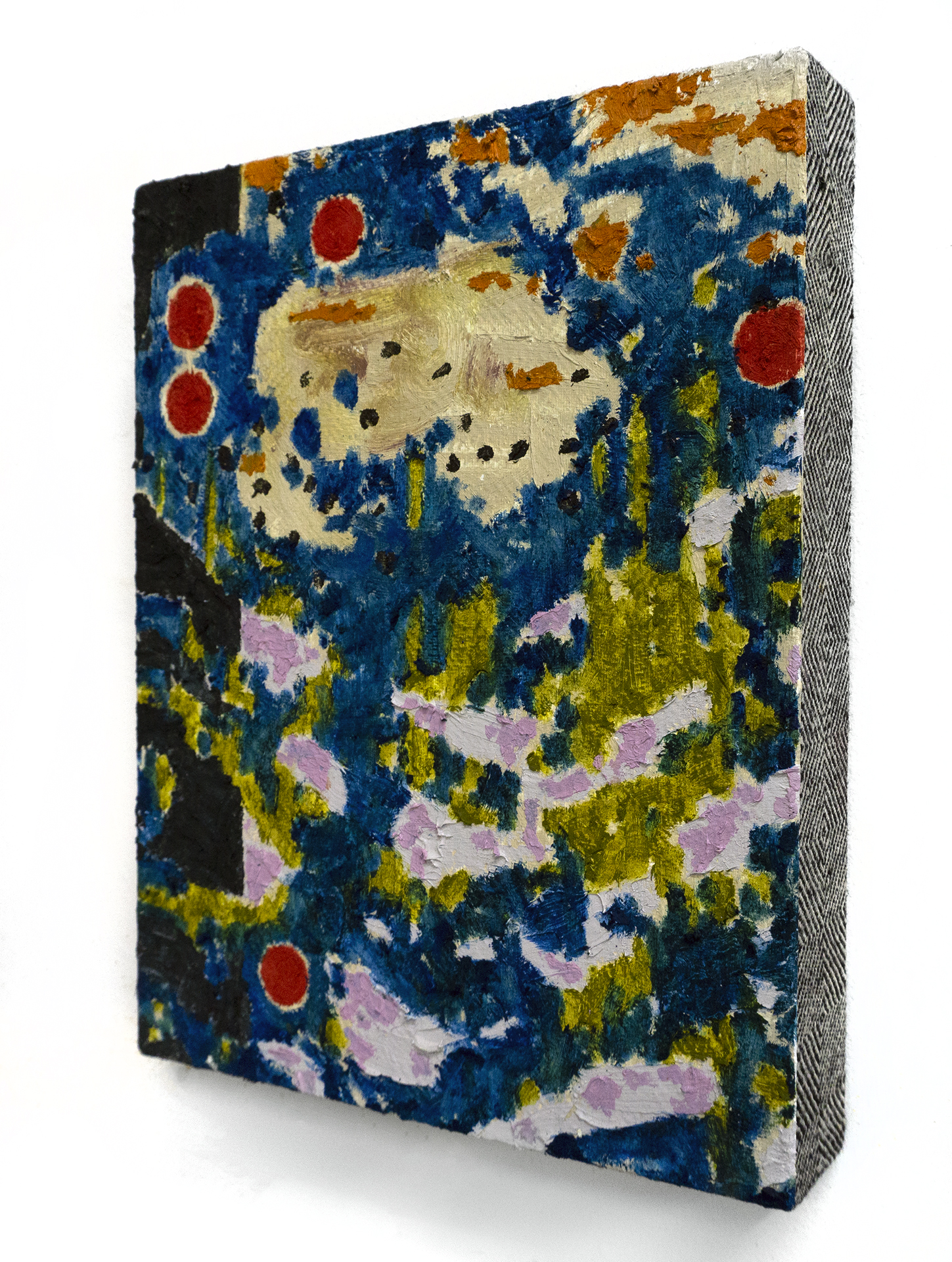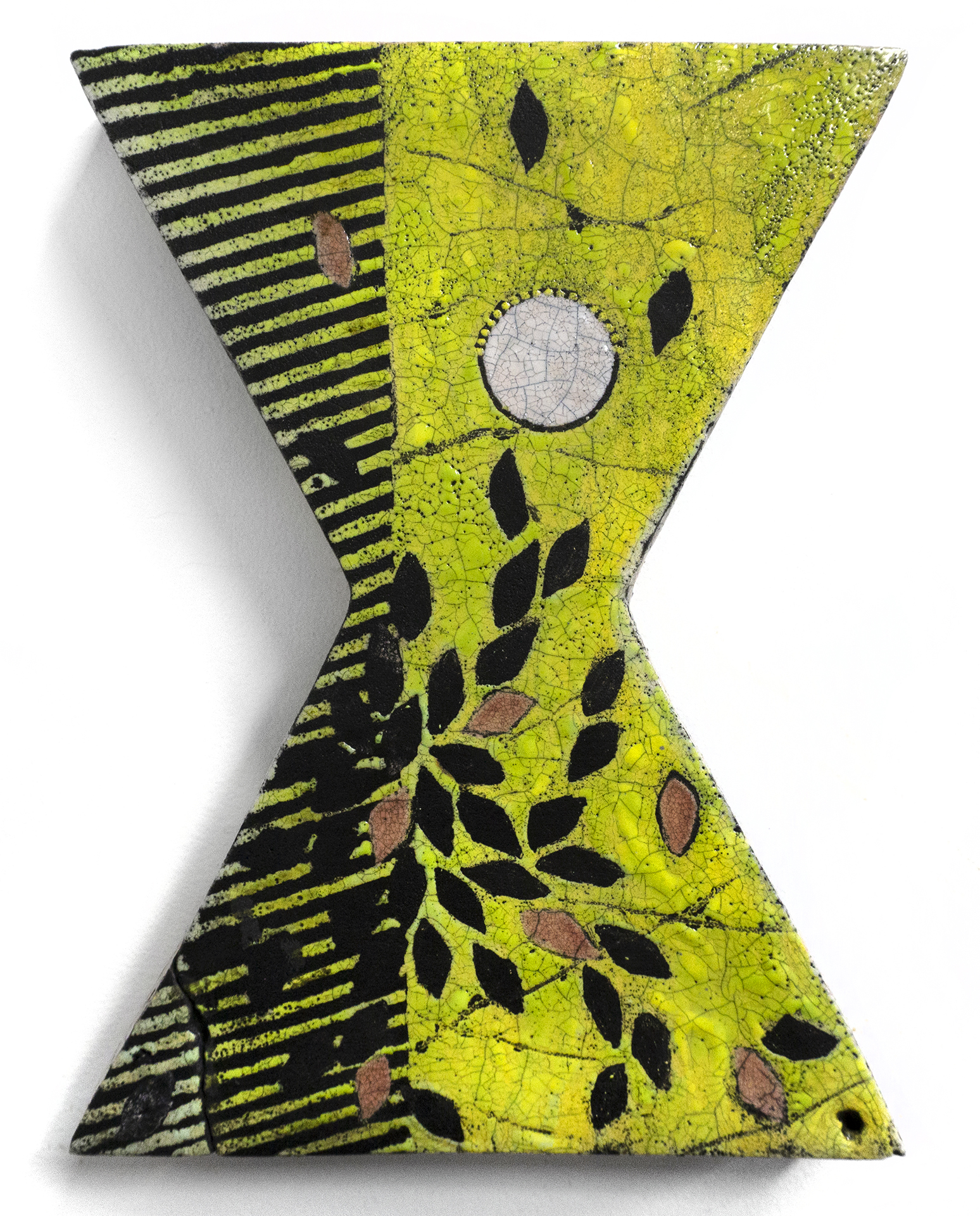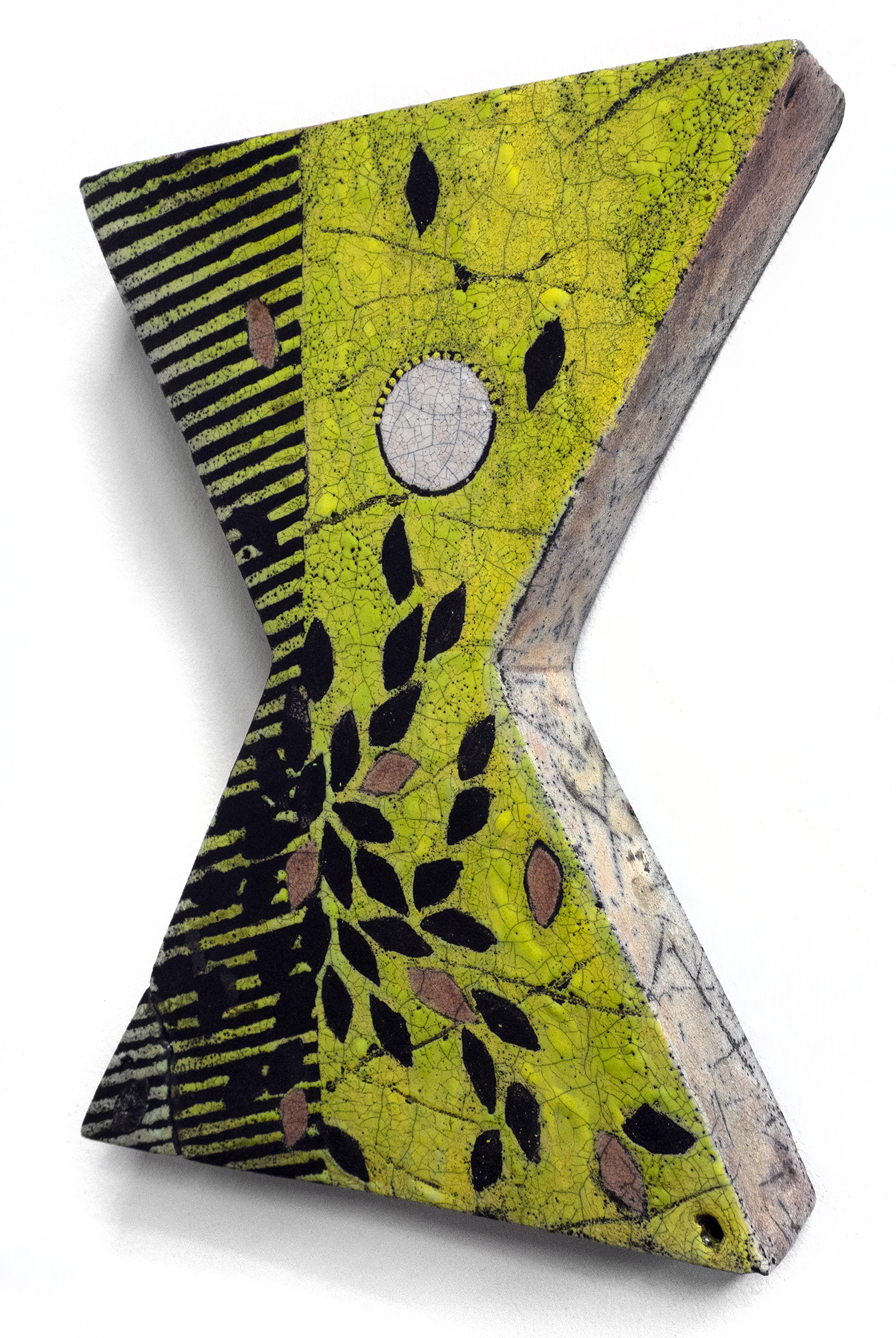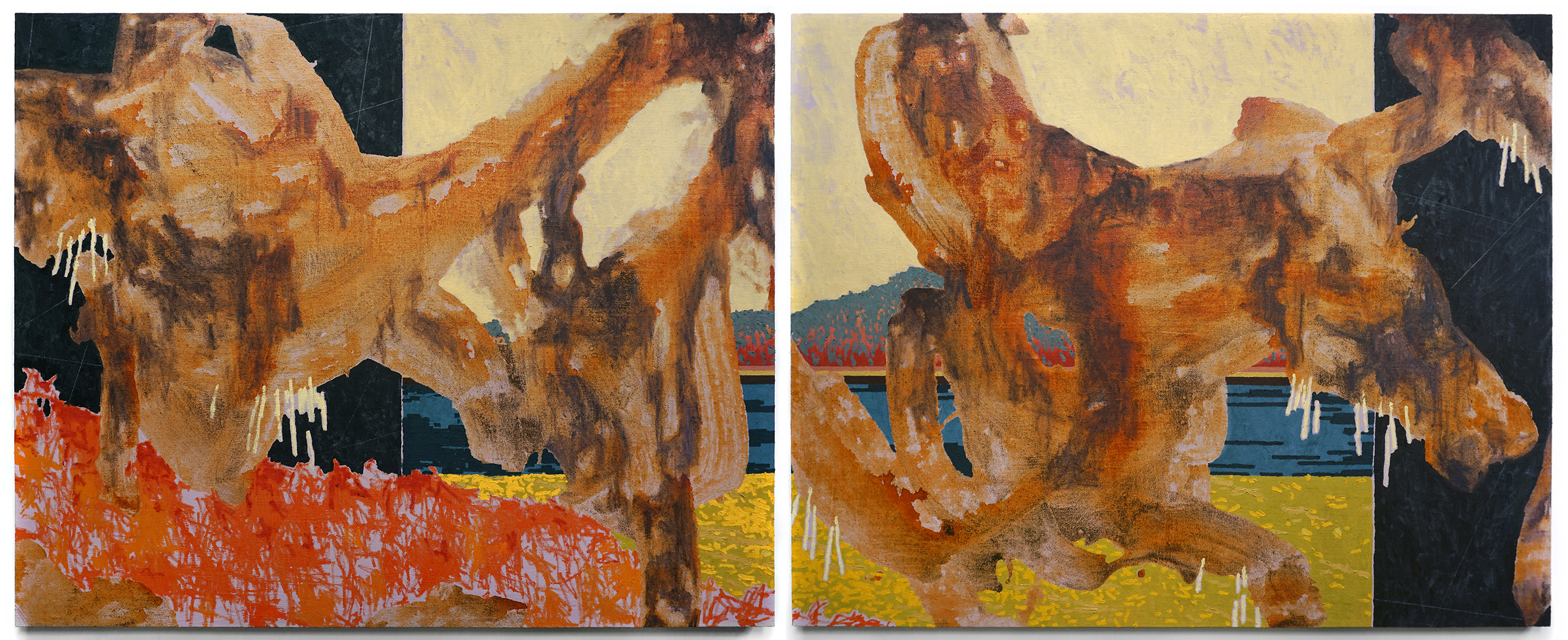
Summer’s Rain, Time’s Arrow (diptych), oil on jute over panel, 48” x 60” each, 2022
ARRAY HUM
Austin Pratt: Artist-in-Residence, Great Basin National Park
In the Summer of 2021, I was fortunate to spend 21 days camping alone as Artist-in-Residence at Great Basin National Park, located in an extremely remote region of eastern Nevada, a land which has been stewarded for centuries by Goshute and Western Shoshone peoples. Given the time and space there, I reflected on questions of history, place, narrative, scale, painting, and love.
My work exists primarily through a studio practice of painting, drawing, and assemblage. Often grainy and caustic in appearance, my painting consists of collecting and reprocessing fragmented images, textures, and patterns from wide sources. Through a painterly organic abstraction and idiosyncratic mark-making, the paintings vibrate between elusive near-recognizable images and real physical objects. At GBNP, I was immersed in a wealth of visual and experiential information, inspired from the micro and granular levels of rock and plant distribution patterns and textures, insect marking, human drama, to the grandeur of the space, sky, and history of the Great Basin.
Environmentalist and scholar Richard G. Lillard once described Nevada, “a land that is geology by day and astronomy at night.” This beautiful observation is fact, yet only a container to support the larger poetic subtext that Nevada is alive. Vast, mysterious, and diverse–in biology, story, and pattern.

This work, Bees See, is a digital drawing made specifically for the Holland Project billboard series. In considering the scale and context of billboards as an image space, I thought about our expectations of outdoor messaging and advertising, and how or if I might be able to distance from any commercial or communicative angle. In mere seconds, and from great distances, billboards must be highly effective in visual transmission, and given our collective excellence in visual literacy, the interpretation of tone, character, and quality of rapid images is immediately discernible.
Beyond that, because of the significant financial entry-point of renting advertising space, our experience of this public junk mail and the visual insult of billboards in the US has the public immune to even noticing them at best, and on psychic defense from unsolicited sales at worst. Because of the cost, their promotions must be financially effective–therefore, despite our varying spectrum of media literacy, we are not expected to be surprised by these images or to be given reprieve from capitalism, much less engaged in a no-strings-attached aesthetic experience.
![]()
![]() In considering this context, I wanted to make some work for this space as unambiguously removed from advertising as possible through a distinctly ambiguous and confusing gesture. This digital collage appropriates the strangely buzzing optical illusion known as the “Out of Focus” illusion first described by Japanese master Akiyoshi Kitaoka in 2001.
In considering this context, I wanted to make some work for this space as unambiguously removed from advertising as possible through a distinctly ambiguous and confusing gesture. This digital collage appropriates the strangely buzzing optical illusion known as the “Out of Focus” illusion first described by Japanese master Akiyoshi Kitaoka in 2001.
In my work as a painter, I’m interested in perception, pattern recognition, and the limits and capacities of our vision. To that end, optical illusions are compelling phenomenon that point to our own limitations and trouble our experience and expectation of ‘truth’ in the world. Our eyes and brains consistently seek pattern and familiarity, using prior information to predict our experience. Instead of what we might believe to be pure intake or data collection into our eyes, there is just as much unconscious projection onto the world as there is new sensory input, if not more so.
Behind these buzzing illusions, shaped and arranged here like silly shimmering flowers, this drawing also plays with the “armature”, or hidden substructure of the image format and picture plane that artists use in composing images, whether paintings, photo, or cinema. This lattice of lines – vertical, horizontal, and diagonal are found by dividing the image into fractions, and playing off of significant intersections to calculate more intentionally arranged compositions. This combination of hidden art math, and obnoxious optical illusion create an image that refers to seeing itself.
This work, up through the month of April 2022 is otherwise a fun drawing imagining the inner experience of our bee friends pollenating our flower friends this spring in Northern Nevada. 🐝
Thank you Holland Project.
Beyond that, because of the significant financial entry-point of renting advertising space, our experience of this public junk mail and the visual insult of billboards in the US has the public immune to even noticing them at best, and on psychic defense from unsolicited sales at worst. Because of the cost, their promotions must be financially effective–therefore, despite our varying spectrum of media literacy, we are not expected to be surprised by these images or to be given reprieve from capitalism, much less engaged in a no-strings-attached aesthetic experience.


In my work as a painter, I’m interested in perception, pattern recognition, and the limits and capacities of our vision. To that end, optical illusions are compelling phenomenon that point to our own limitations and trouble our experience and expectation of ‘truth’ in the world. Our eyes and brains consistently seek pattern and familiarity, using prior information to predict our experience. Instead of what we might believe to be pure intake or data collection into our eyes, there is just as much unconscious projection onto the world as there is new sensory input, if not more so.
Behind these buzzing illusions, shaped and arranged here like silly shimmering flowers, this drawing also plays with the “armature”, or hidden substructure of the image format and picture plane that artists use in composing images, whether paintings, photo, or cinema. This lattice of lines – vertical, horizontal, and diagonal are found by dividing the image into fractions, and playing off of significant intersections to calculate more intentionally arranged compositions. This combination of hidden art math, and obnoxious optical illusion create an image that refers to seeing itself.
This work, up through the month of April 2022 is otherwise a fun drawing imagining the inner experience of our bee friends pollenating our flower friends this spring in Northern Nevada. 🐝
Thank you Holland Project.

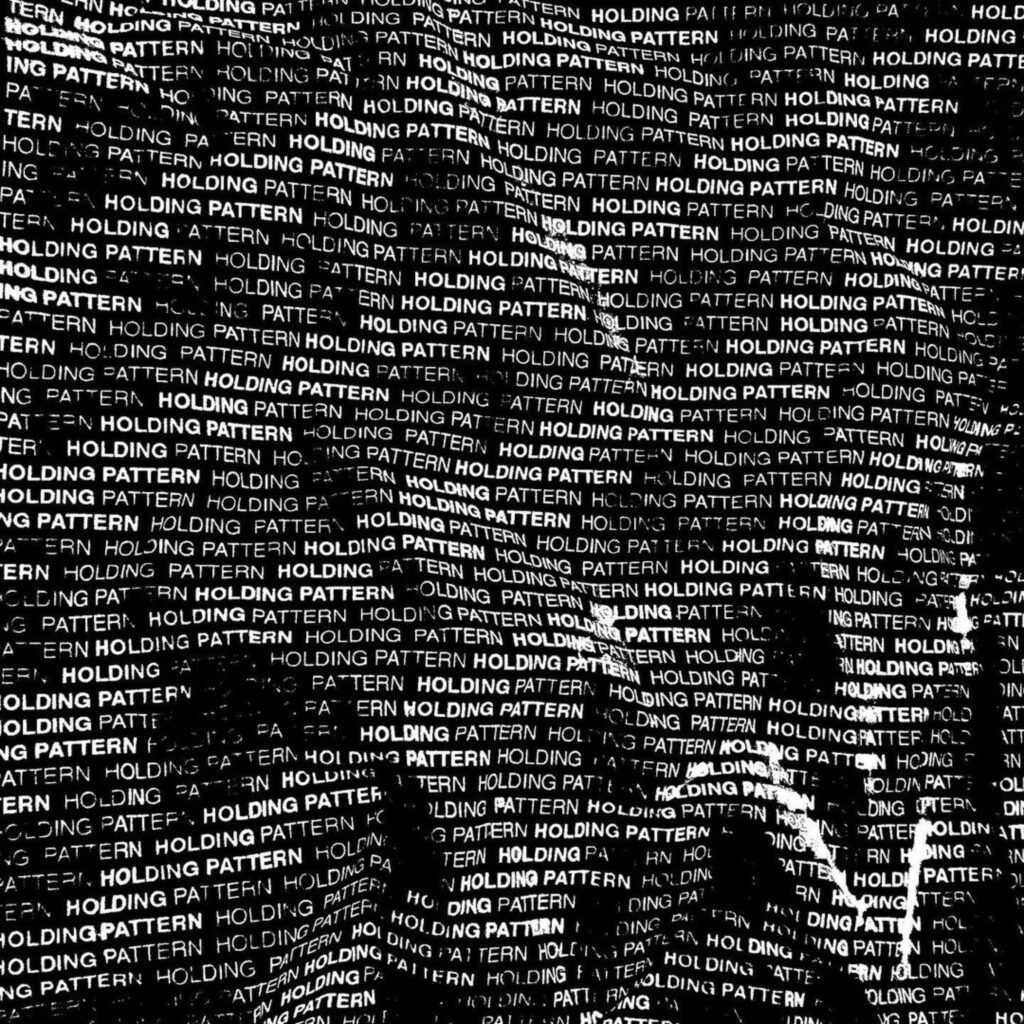

At first glance, I was struck by how contemporary Maurus’s 1200-year-old poem drawings felt. In looking further, it became clear that what I was recognizing was a way of thinking and making visible in a lot of the artists’ work that I love today. The poems, like many of the works in the exhibition, have a literary organization and a visual organization, and those modes are inextricably linked, two frequencies buzzing in tandem. As signifier and signified become entangled and compositional elements begin to slip, letterforms may read as non-representational shapes or come into focus as words with understood meanings. Geometric structures might organize a visual plane or disrupt a poetic cadence, narrative, or landscape. Repetitive marks might coalesce, like a murmuration of starlings, into a new form only legible at a distance.
While the scale and materiality of the works in the exhibition vary greatly, a number of formal, aesthetic, and process throughlines emerge: textiles and references to domestic textile objects; collage and found imagery/text; camouflage and floral pattern references to landscape; codes, symbol vocabularies, and words as both images and things (and more, if you’re looking for them). As an exhibition, the goal for Holding Pattern was to mirror and amplify the textual, visual, and material interplay within the works in the space itself, an installation as meta-poem and vice versa.
– Nick Larsen, Guest Curator
Featuring works by Chris Duncan, Nick Fagan, Hasler Gomez, Kara Gut, Ann Hamilton, Alicia Little, Alex Lucas, Cat Mailloux, Julia Schwadron Marianelli, Michael Mercil, William J. O’Brien, Hannah Parrett, Austin Pratt, Emily Manalo Ruiz, Dean Smith, Jared Stanley, and Ryland Wharton.
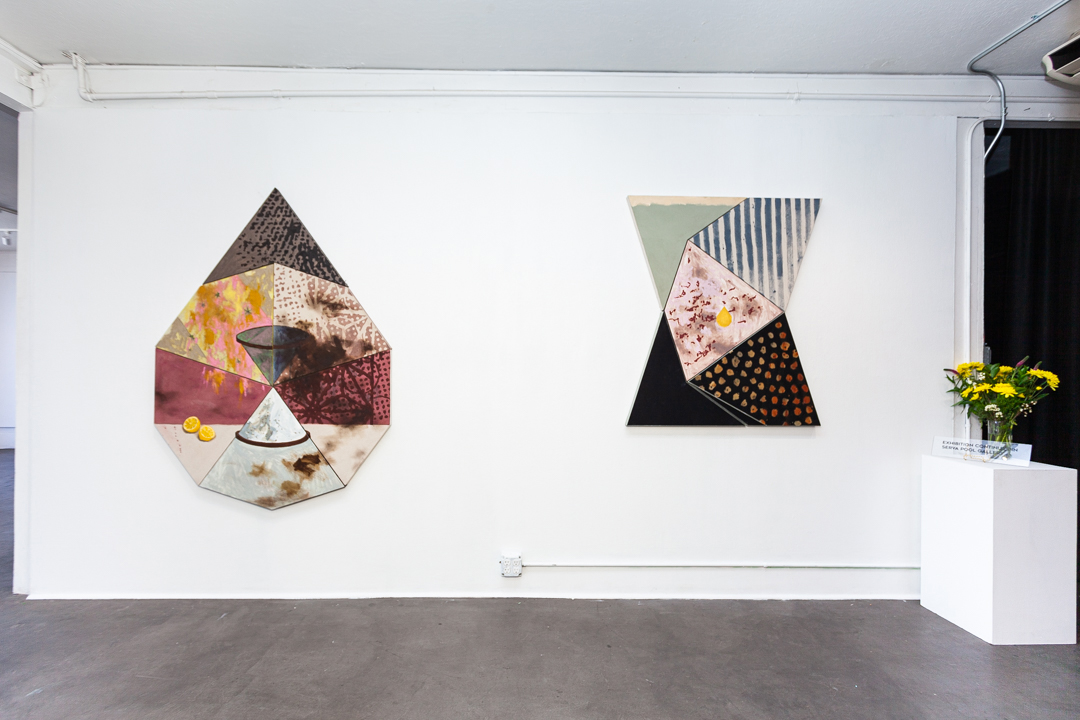
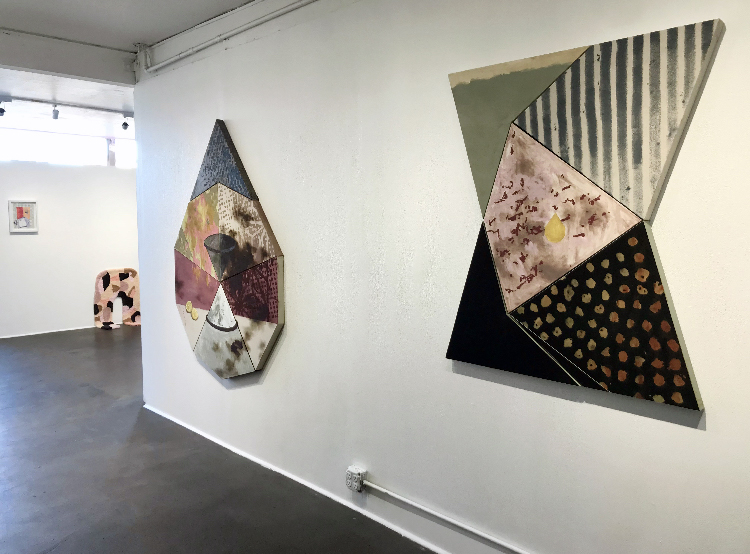
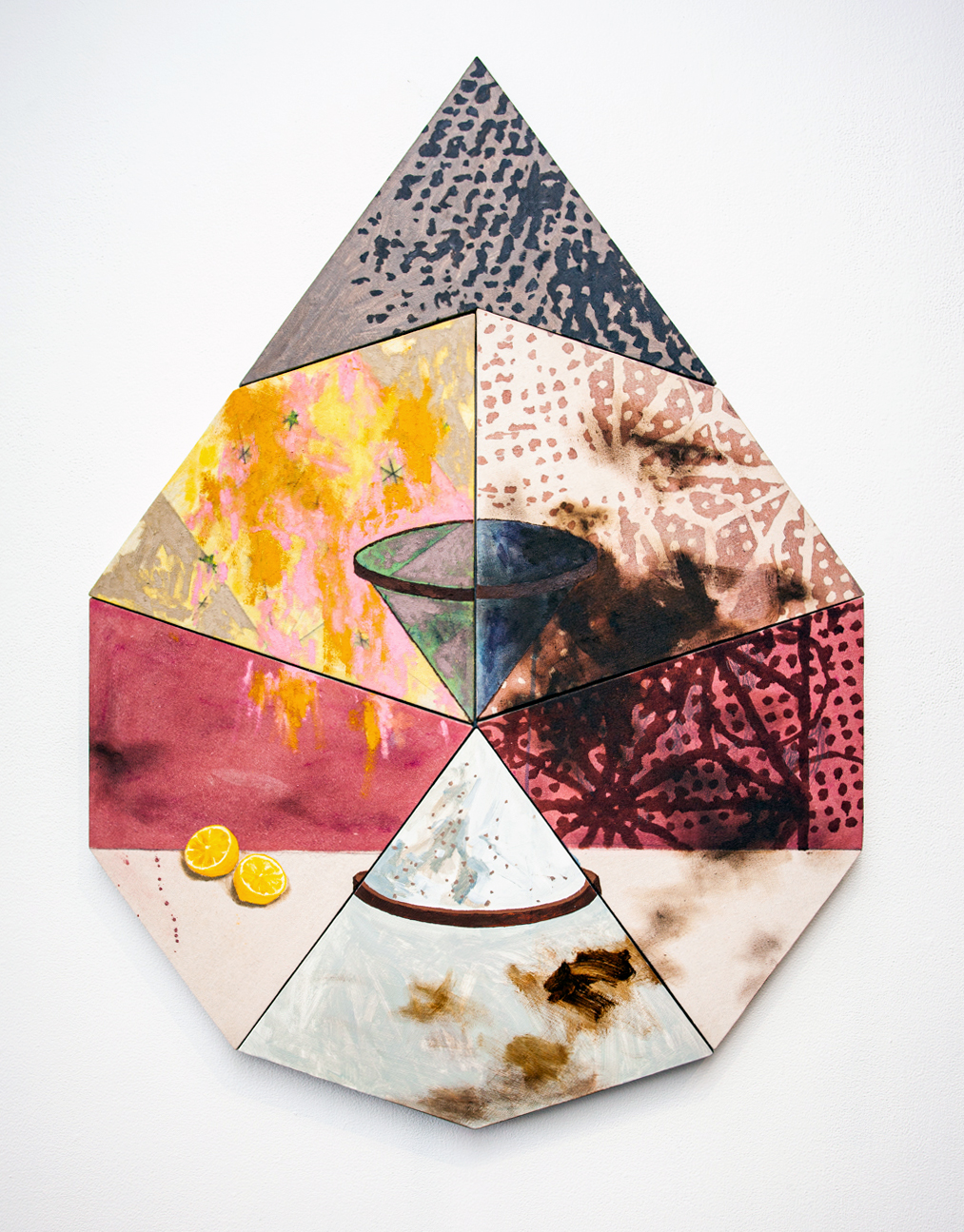

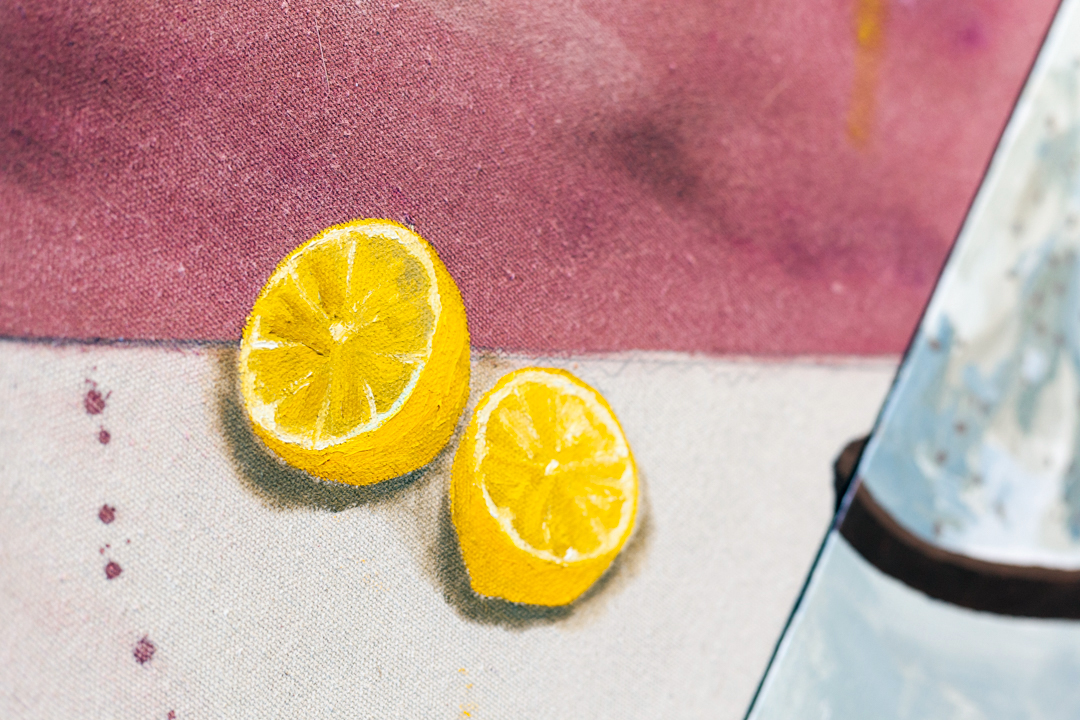
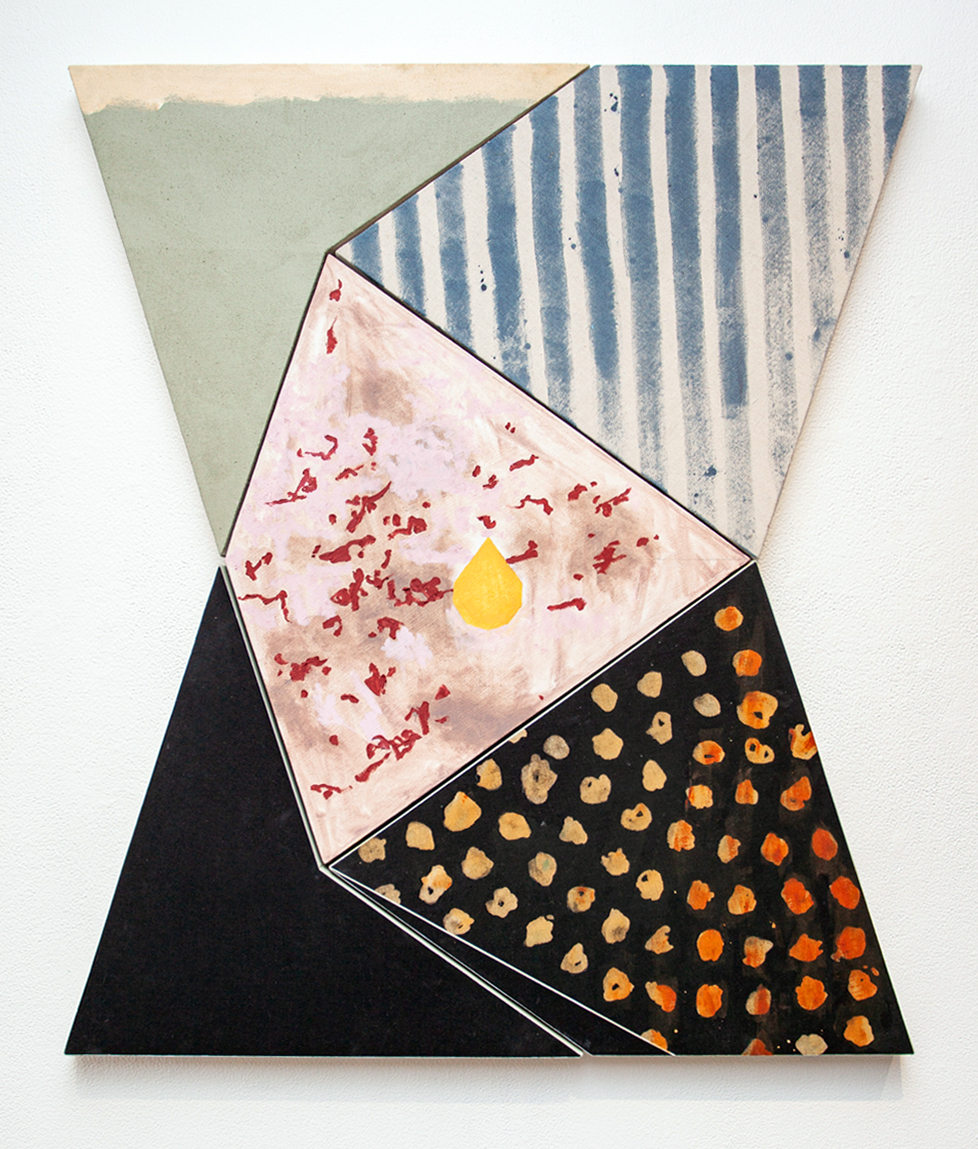
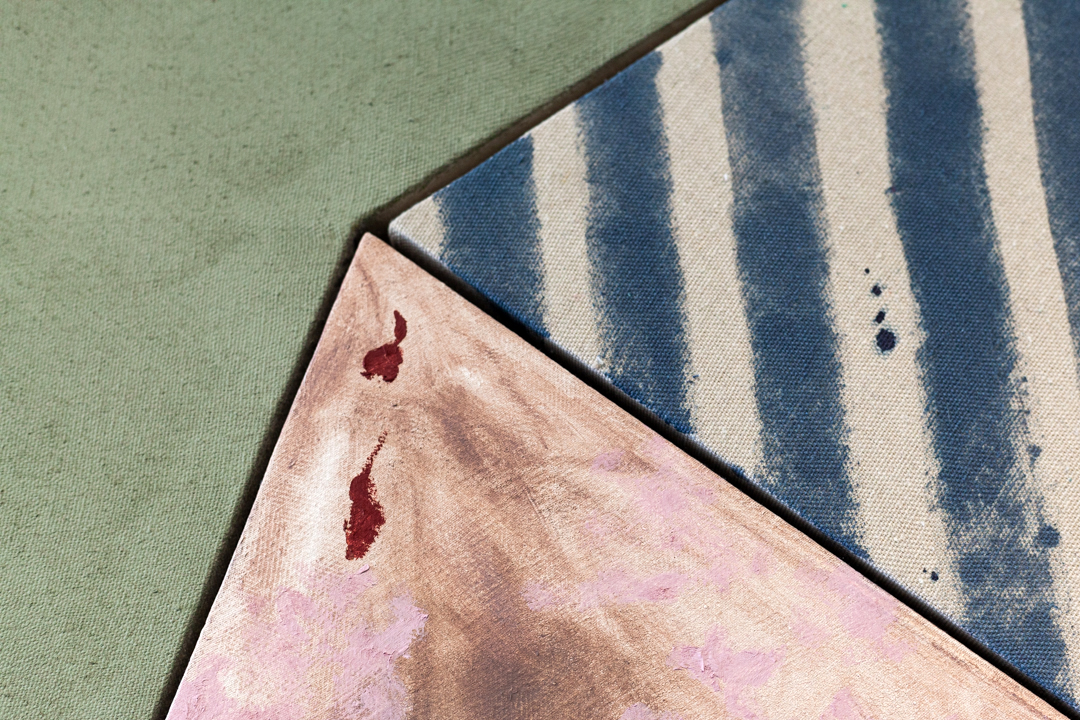


Palazzo San Guiseppe, Polignano a Mare, Italy 2021






Inside, A Moon (I-VI), mixed media collages, 10.5” x 8”, 2021












